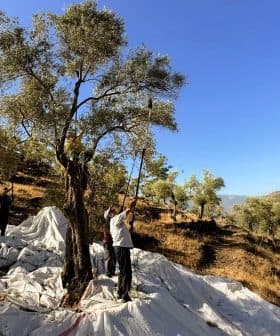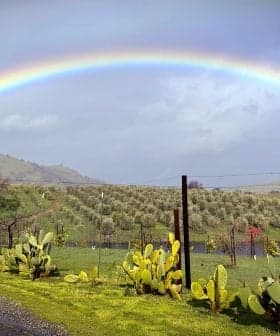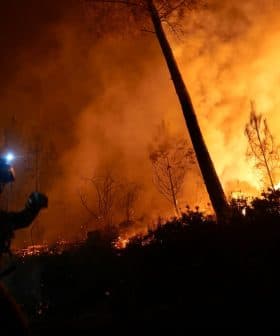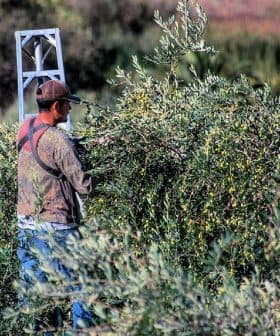Wildfires Not Expected to Impact Record Olive Oil Production in California
The 2017 harvest is on track for a record production of 4.3 million gallons, according to the California Olive Oil Council.
 California Olive Ranch
California Olive RanchCalifornia olive oil producers are gearing up for an expected record-breaking harvest despite wildfires in several oil-producing regions. The industry is experiencing significant growth in both production and demand, with over 40,000 acres currently planted and an additional 20,000 acres anticipated to be planted by 2020.
October finds olive oil producers throughout California dusting off equipment, monitoring oil content and preparing for harvest. As the state begins what is expected to be an unprecedented harvest, mother nature challenged the course of events in several oil-producing regions with wildfires in Napa, Sonoma, Mendocino, Lake counties and beyond. Overall the industry is expecting only minor setbacks, according to the California Olive Oil Council (COOC).
The 2017 harvest, taking place from October through December in California, is on track for an estimated total production of 4.3 million gallons. This would be the highest production to date, with the fall 2016 harvest having produced 3.5 million gallons of extra virgin olive oil and 4 million gallons in 2015.
The anticipated landmark numbers are being ushered in at an opportune time for the industry. This harvest coincides with remarkable growth in both production and demand.
From 2015 to 2016, nationwide sales of California olive oil experienced almost 40 percent growth year over year according to IRI data. This is 10 times the overall category growth of 4 percent. This upward trend in demand is being reflected in widespread investment in new acreage.
As of August 2017, there are over 40,000 acres planted in California for the production of extra virgin olive oil. This number is comprised of over 400 growers and producers of olive oil in California, with the greatest concentration of olives for oil throughout the Sacramento and San Joaquin Valleys.
An additional 20,000 acres are anticipated to be planted by 2020, according to the COOC, increasing the total acreage by 50 percent. With the devastation caused by the recent wildfires somewhat isolated to the North Bay region, consumers are likely to be unaffected as production volumes and price comparisons are expected to remain constant.
In an effort to support producers impacted by the wildfires, the COOC has established a funding mechanism to assist those in need. Contributions will be donated to recovery on behalf of the entire industry.
In addition, a registry has been set up on the COOC website for those who have been affected to become eligible to receive aid.







